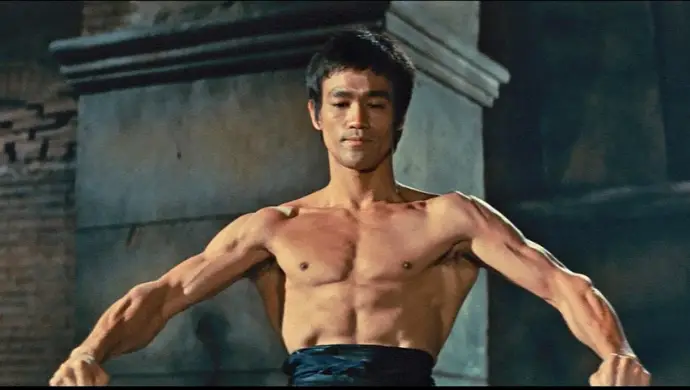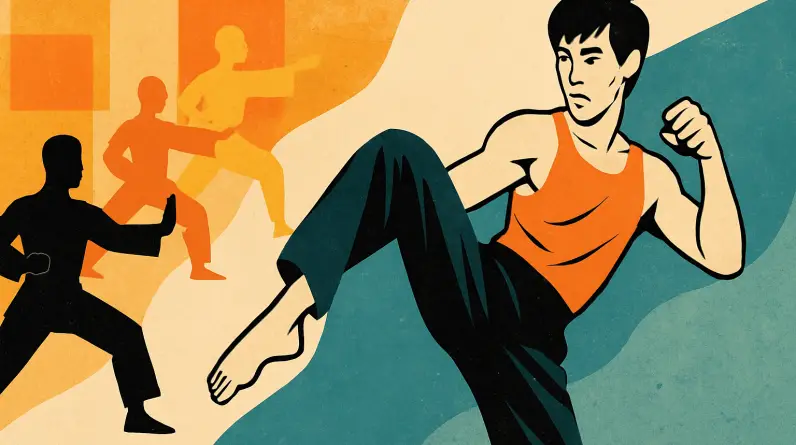
When we think of Bruce Lee, our minds often race to his lightning-fast punches, his iconic one-inch punch, or perhaps his mesmerizing nunchaku skills. However, there’s a layer to his martial arts mastery that doesn’t always get the spotlight it deserves. That’s his exploration and integration of grappling, wrestling, and submission techniques into his personal martial arts philosophy, Jeet Kune Do. This post delves into the lesser-known grappling talents of Bruce Lee. In doing so, it reveals how Bruce’s open-minded approach and relentless pursuit of knowledge led him to embrace and excel in a well-rounded combat methodology that extended well beyond striking.
Embracing the Ground Game
Bruce Lee’s martial arts journey began with Wing Chun, a Chinese kung fu style known for its striking techniques, quick arm movements, and close-quarter combat. But Lee was a visionary who saw beyond the limitations of any single discipline. His quest for martial arts supremacy was not confined to the striking arts. He sought to create a comprehensive fighting system that included effective techniques from every aspect of combat, including grappling, wrestling, and submissions.
This journey led him to cross paths with several notable martial artists from various disciplines. They greatly influenced his understanding and appreciation of the ground game. Among these influential figures were Gene LeBell and Wally Jay.
Learning from the Best: The Influence of Gene LeBell and Others
Gene LeBell, often referred to as “Judo” Gene LeBell, was an American martial artist, professional wrestler, and stunt performer known for his expertise in judo and submission grappling. Lee and LeBell’s encounter is a legendary tale in martial arts circles, where it is said that LeBell was able to incapacitate Lee through grappling, which led to Lee’s fascination with the skill set. LeBell, with his extensive background in judo and wrestling, introduced Lee to the intricacies of grappling and the importance of incorporating submission holds and ground-fighting techniques into his arsenal. Their exchange of knowledge was mutual, with Lee teaching LeBell striking techniques in return.
Wally Jay, a grandmaster of Small Circle Jujitsu, also played a crucial role in Bruce Lee’s martial arts development. Jay’s philosophy of using minimum effort with maximum efficiency in joint locks and submissions resonated with Lee’s own principles. The blending of Jay’s joint manipulation techniques with Lee’s striking prowess resulted in a more holistic approach to combat for the latter.
Integrating Grappling into Jeet Kune Do
The influence of these grappling and wrestling experts was profound. They led Bruce Lee to incorporate these elements into Jeet Kune Do (JKD), the martial arts philosophy he founded. JKD was built on the concept of absorbing what is useful, discarding what is not, and adding uniquely one’s own. This philosophy made it a perfect vessel for integrating the best practices from various martial arts, including the grappling techniques Lee learned from his encounters with the likes of LeBell and Jay.
Lee’s interest in grappling wasn’t just theoretical. He actively trained in these techniques, understanding that a well-rounded martial artist should be as comfortable on the ground as they are standing. He believed in the concept of “be water, my friend,” which meant adapting to any situation or opponent, whether the fight was on the feet at a distance, or had moved into close quarters or even to the ground.
Legacy and Influence
Bruce Lee’s exploration of grappling, wrestling, and submission techniques showcased his revolutionary approach to martial arts. He was not just a phenomenal striker; he was a true mixed martial artist avant la lettre. His willingness to learn from experts like Gene LeBell and Wally Jay, and incorporate their teachings into his own philosophy, speaks volumes about his humility and his commitment to martial arts excellence.
Today, the influence of Bruce Lee’s grappling exploration is seen in the practices of many Jeet Kune Do practitioners around the world. They continue to study and incorporate various grappling techniques into their training, seeking a cohesive, balanced and effective fighting style, following in the footsteps of the master himself.
Bruce Lee’s journey into the world of grappling and wrestling is a testament to his incredible foresight and understanding of martial arts as a holistic discipline. His legacy is not just in the punches and kicks he perfected but also in the grappling techniques he embraced and integrated into Jeet Kune Do, making him a true pioneer of mixed martial arts.






